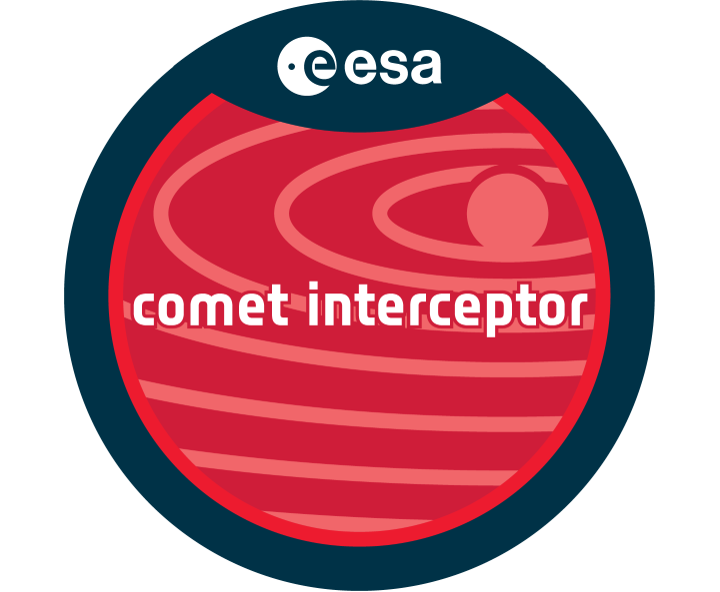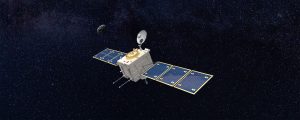Comet Interceptor is a mission of the European Space Agency
The Comet Interceptor space mission adopted on June 8, 2022 by the European Space Agency (ESA) will be launched in 2029. Developed in collaboration with the Japanese space agency (JAXA), Comet Interceptor will be the first space mission to visit a newly active comet (or possibly an interstellar object such as ʻOumuamua or 2I/Borisov) through the simultaneous flyby of three space probes.
Artist’s view of Comet Interceptor (Comet-I) from one of the planned architectures. [Image credit: OHB Italia]
A unique feature of this space mission is that it will wait in the solar system before merging with a comet from the outer reaches of the solar system. This target will not be discovered for a few years and potentially after Comet Interceptor has left the Earth.
Comet Interceptor will be composed of three space probes. The composite spacecraft will wait patiently at a point in the solar system (Lagrange point L2) for a suitable target comet, and then travel together before the three space probes that comprise it separate a few weeks before intercepting the comet. Its three spacecraft will then make simultaneous observations around the comet. Each spacecraft will be equipped with specific scientific instruments that will provide complementary information about the comet’s nucleus and its environment of gas, dust and plasma, to understand the nature of a primitive comet interacting with the ever-changing solar wind environment. They will create the first 3D profile of a comet from the Oort cloud, containing material that has survived since the formation of the Sun and planets.
The LPC2E is in charge of the COMPLIMENT (COMetary Plasma Light Instrumentation) dedicated to the measurement of the plasma (density, temperature, velocity) around the target comet. It will also measure its electric field and count the fine cometary dust emitted by its nucleus. The measurements of this instrument will allow to understand the interactions between the sun and the comets.
You can find more information on the mission’s website.
Contact at LPC2E : Pierre.Henri@cnrs-orleans.fr


